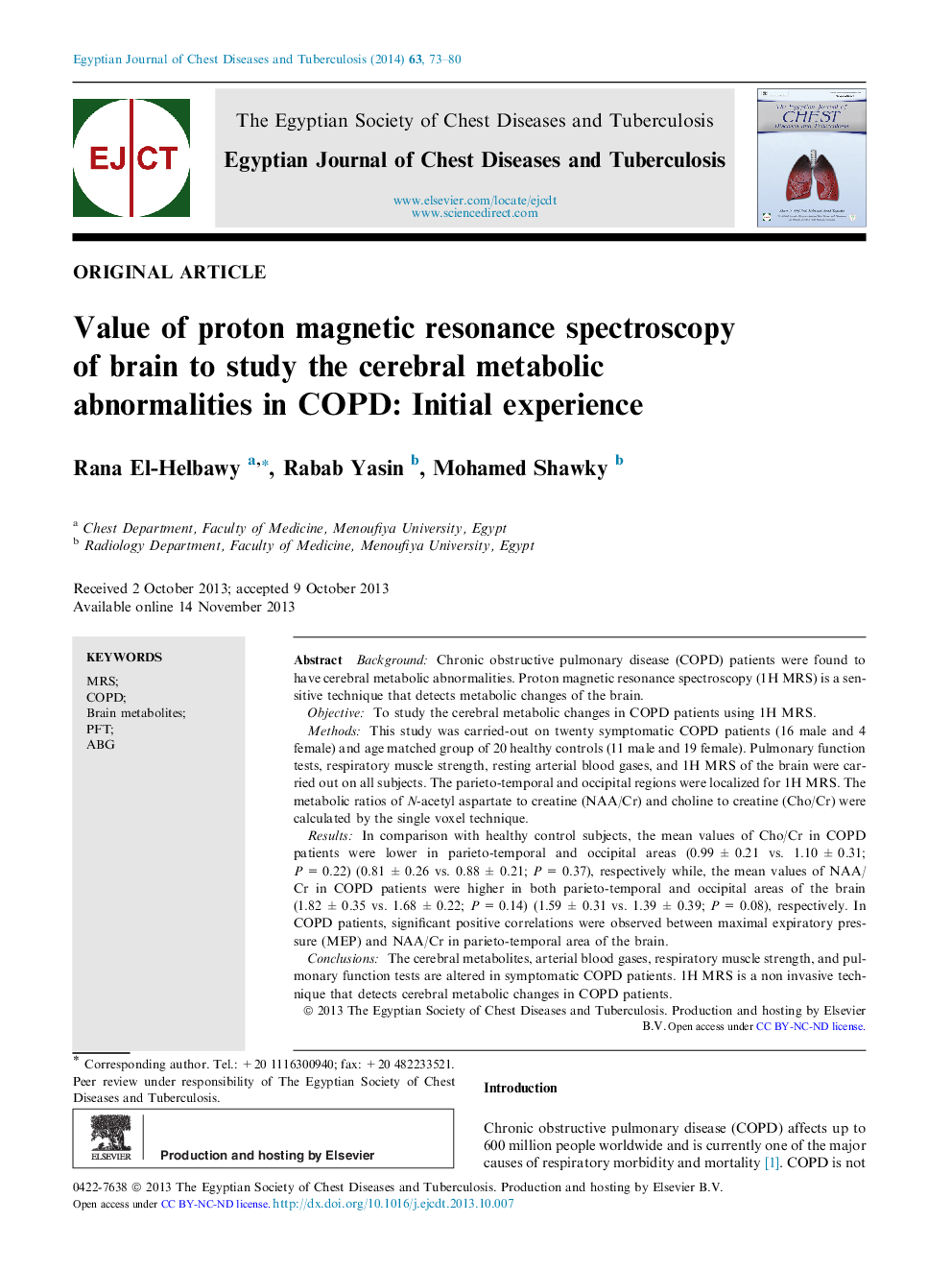| Article ID | Journal | Published Year | Pages | File Type |
|---|---|---|---|---|
| 3400138 | Egyptian Journal of Chest Diseases and Tuberculosis | 2014 | 8 Pages |
BackgroundChronic obstructive pulmonary disease (COPD) patients were found to have cerebral metabolic abnormalities. Proton magnetic resonance spectroscopy (1H MRS) is a sensitive technique that detects metabolic changes of the brain.ObjectiveTo study the cerebral metabolic changes in COPD patients using 1H MRS.MethodsThis study was carried-out on twenty symptomatic COPD patients (16 male and 4 female) and age matched group of 20 healthy controls (11 male and 19 female). Pulmonary function tests, respiratory muscle strength, resting arterial blood gases, and 1H MRS of the brain were carried out on all subjects. The parieto-temporal and occipital regions were localized for 1H MRS. The metabolic ratios of N-acetyl aspartate to creatine (NAA/Cr) and choline to creatine (Cho/Cr) were calculated by the single voxel technique.ResultsIn comparison with healthy control subjects, the mean values of Cho/Cr in COPD patients were lower in parieto-temporal and occipital areas (0.99 ± 0.21 vs. 1.10 ± 0.31; P = 0.22) (0.81 ± 0.26 vs. 0.88 ± 0.21; P = 0.37), respectively while, the mean values of NAA/Cr in COPD patients were higher in both parieto-temporal and occipital areas of the brain (1.82 ± 0.35 vs. 1.68 ± 0.22; P = 0.14) (1.59 ± 0.31 vs. 1.39 ± 0.39; P = 0.08), respectively. In COPD patients, significant positive correlations were observed between maximal expiratory pressure (MEP) and NAA/Cr in parieto-temporal area of the brain.ConclusionsThe cerebral metabolites, arterial blood gases, respiratory muscle strength, and pulmonary function tests are altered in symptomatic COPD patients. 1H MRS is a non invasive technique that detects cerebral metabolic changes in COPD patients.
